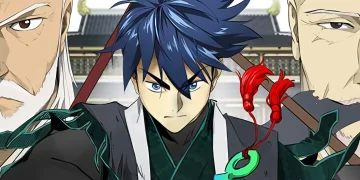‘Naruto Spin-Off: Rock Lee & His Ninja Pals’ is a humorous anime series that is a spin-off of the well-known manga and anime series ‘Naruto. There are 51 episodes in the entire series, and they all last roughly ten minutes.
Studio Pierrot produced it, and it was aired in Japan from April 2012 to March 2013. Rock Lee, a teenage ninja from the Hidden Leaf Village who is incapable of doing ninjutsu or genjutsu, is the protagonist of the series. He instead concentrates on hand-to-hand fighting or taijutsu.
Rock Lee goes on a number of humorous missions and adventures with his comrades Tenten and Neji, as well as his sensei Guy. Naruto, Sakura, and Sasuke, as well as another well-known ninja from the original “Naruto” series, are among the many other ninjas the characters run against during the course of the story.
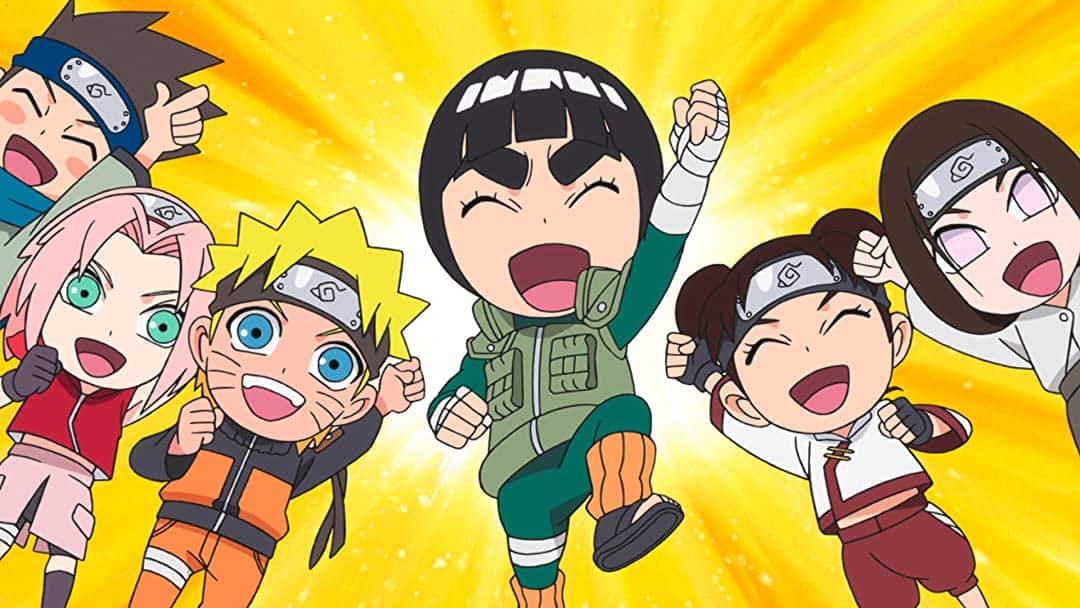
The show is renowned for its comic tone since it frequently parodies the original “Naruto” plot and uses exaggerated versions of the original series characters. Fans of the “Naruto” franchise adore the series for its humorous and engaging approach to the ninja world. For those who love the franchise and want to see a fun and lighthearted show, it is a must-watch.
Also Read: Will Kurama Be Reborn In Boruto: Naruto Next Generations?
Top Must-Know Facts Before You Watch
1. Chibi Art Style Was Used To Create Characters
Character designs for “Naruto Spin-Off: Rock Lee & His Ninja Pals” were based on chibi artwork, an anime and manga style that emphasizes adorable and exaggerated features. Characters known as “chibi” are often little, have large heads and eyes, and are frequently utilized in comic or lighter settings.

The chibi design distinguished “Rock Lee & His Ninja Pals” from the more somber and realistic character designs of the original “Naruto” series and contributed to the show’s unique look and felt.
2. The Series Often Breaks The Fourth Wall And Features Self-aware Humor
The characters in “Naruto Spin-Off: Rock Lee & His Ninja Pals” often break the fourth wall, acknowledging that they are in a fictional world and addressing directly to the viewers. In episode 2, Lee and his pals are shown engaging in a school festival. Lee tries to impress a girl by dancing, but he fumbles and falls to the ground. This isn’t how it’s supposed to happen in a shonen anime. He exclaims as he turns to face the camera.
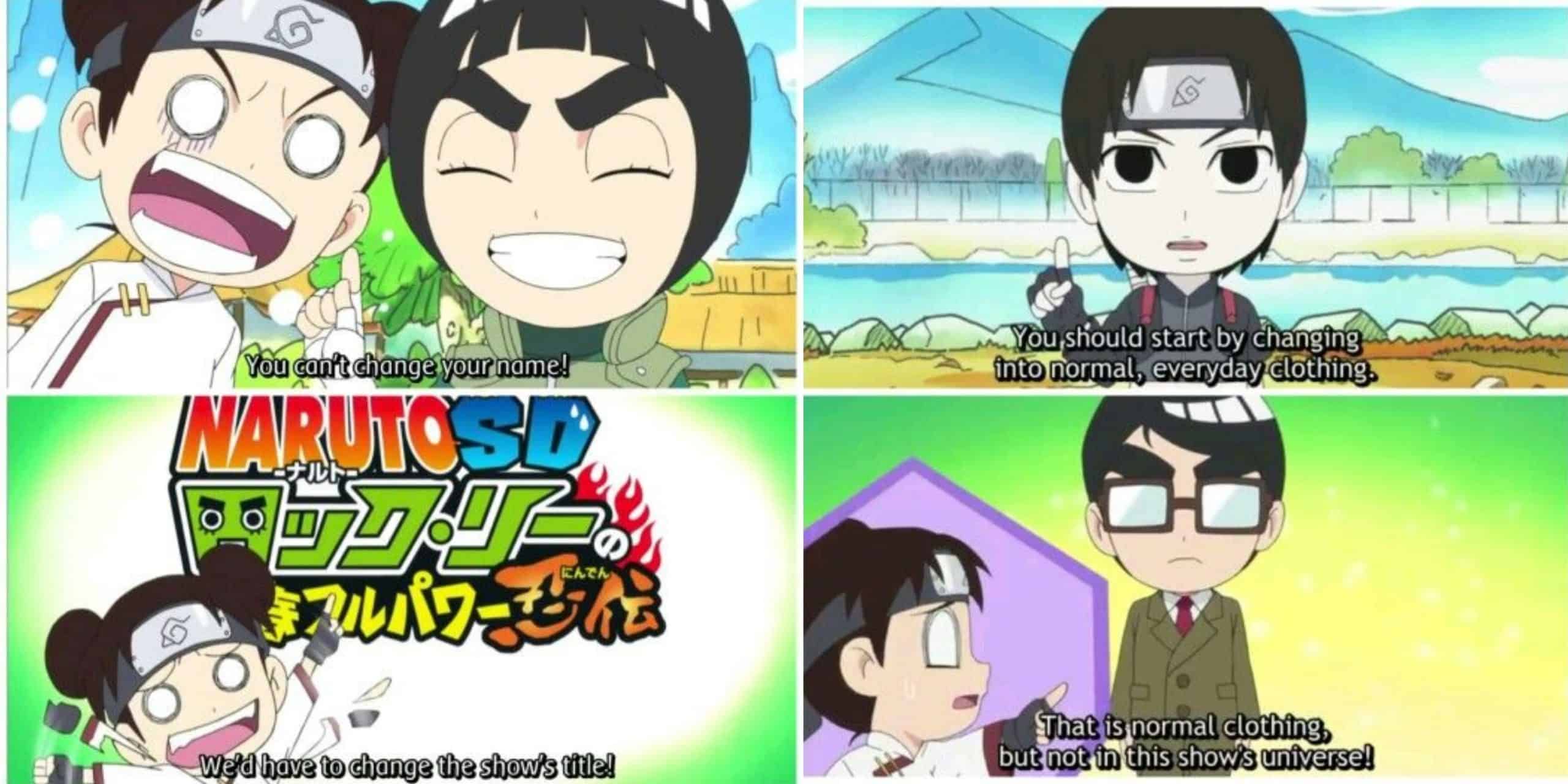
In episode 9, the characters are shown taking part in a test of courage. Lee turns to the camera and declares, “This is totally not part of the ninja exam!” as he and his companions encounter a terrifying monster. In episode 17, the protagonists are shown at a beach scene where they get up to all sorts of mischief and adventures. As Lee and his buddies are seen aboard a boat at one point, Lee remarks, “We’re like the cast of a cheesy anime!”
3. The Show’s Opening Theme Song Is “Give Lee Give Lee Rock Lee.”
The opening theme song for “Naruto Spin-Off: Rock Lee & His Ninja Pals” is named “Give Lee Give Lee Rock Lee,” and it is sung by the all-female Japanese ska band “OreSkaBand.”
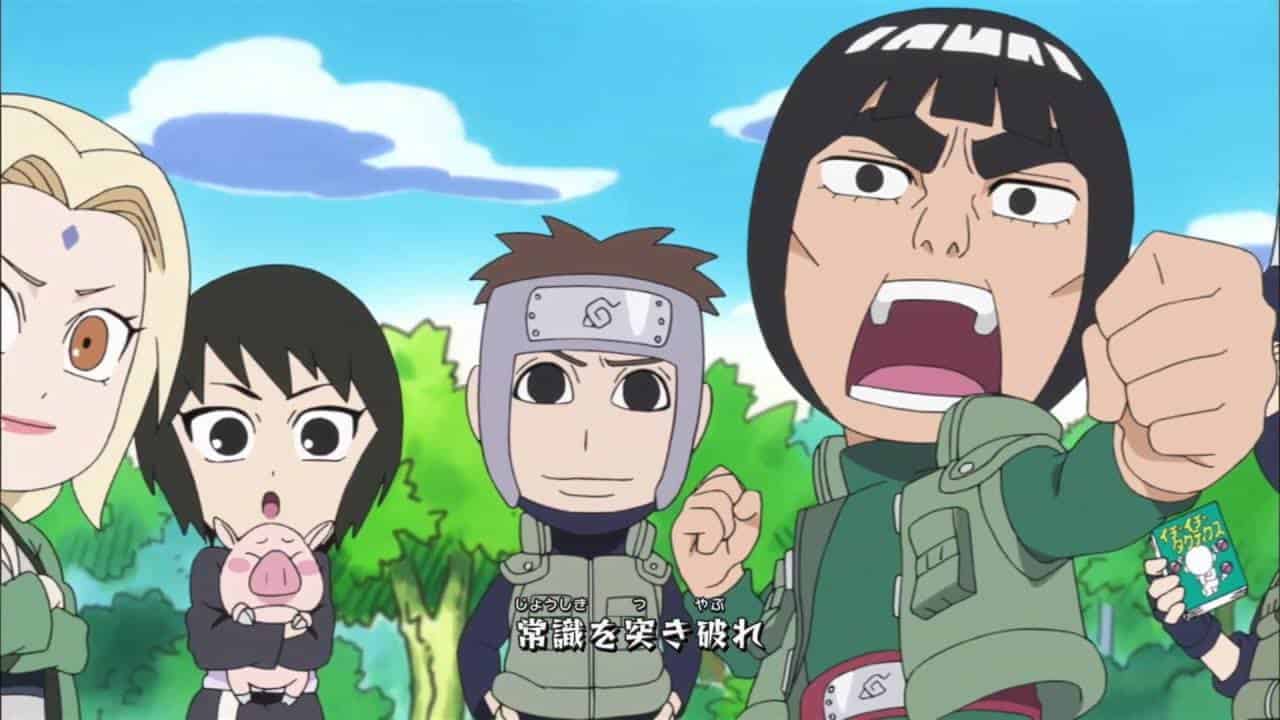
The song’s lyrics, which include lines like “He runs to the front without fear, this boy named Lee” and “He trains so hard he can’t even move, but he never stops, never gives up,” center on Rock Lee’s tenacity and spirit of resistance. The catchy melody and energetic ska feel of the song are a wonderful match for the series‘ frantic, comical pace.
Also Read: Most Popular Hottest Anime Girls To Exist!
4. Created As Part Of A Broader Initiative To Celebrate The 10th Anniversary Of The “Naruto” Franchise
“Rock Lee & His Ninja Pals” was produced as part of a bigger attempt to honor the 10th anniversary of the “Naruto” franchise. The spin-off series premiered in April 2012, the same month as the original “Naruto” manga series celebrated its tenth anniversary.
Many activities were planned to commemorate the anniversary, including the publishing of a special manga one-shot, an adaptation for the stage, and mementos like art books and figurines.
This anniversary celebration also included the anime series “Rock Lee & His Ninja Pals,” which offered fans a fresh perspective on the “Naruto” world and its adored characters. The 10th-anniversary celebration allowed fans to reflect on “Naruto’s” influence on the anime and manga industries and honor the series’ enduring legacy.
5. Rock Lee’s “The Leaf Hurricane” Is Exaggerated And Given Different Names
In “Rock Lee & His Ninja Pals,” the Leaf Hurricane is sometimes exaggerated and given numerous comical titles, such as the “Dynamic Entrance Super Ultra Many Many Fists” or the “Super Dynamic Tornado Punch.” This is one of the ways the show gives the classic “Naruto” series a fun and humorous twist.
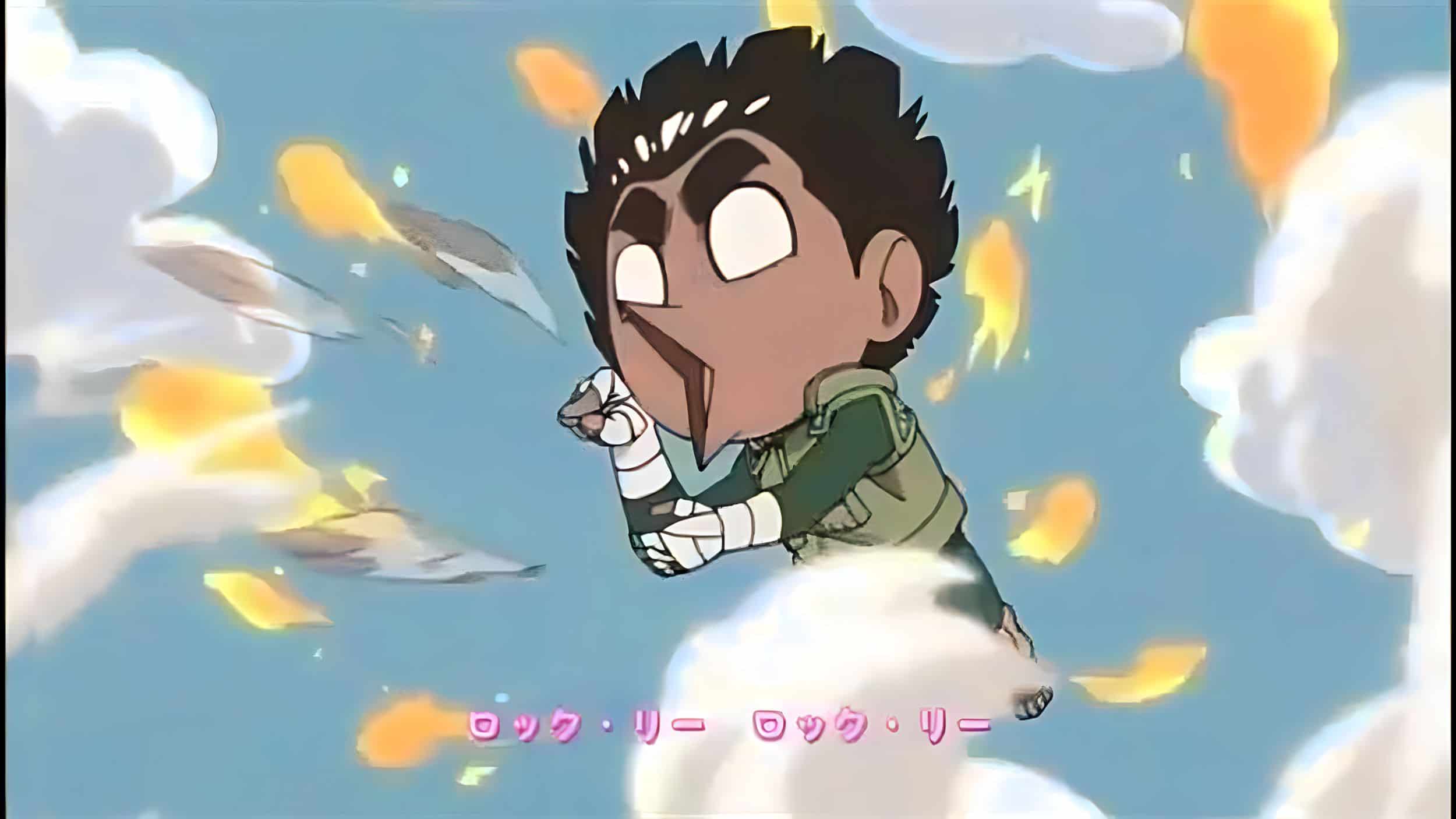
Several of the characters’ distinguishing gestures and fighting styles are exaggerated in the show for humorous effect. For instance, the Rasengan and Chidori are referred to in the show as “Spiraling Serial Spheres” and “Lightning Cutter,” respectively. These adjustments are aimed at up the comic factor of the show and providing viewers with a fun, new perspective on the familiar techniques.
6. A Episode Parodies “One Piece” With Pirates And Treasure Hunts
In one of its episodes, “Rock Lee & His Ninja Pals” parodies the well-known manga and anime series “One Piece.” The series’ protagonists wear pirate costumes for the episode “Enter the Pirate Alliance!” in which they go on a treasure hunt. The episode makes various allusions to “One Piece,” including the appearance of a character who resembles Monkey D. Luffy and the usage of a treasure map.

Also Read: 27 Best Gintama Facts You Might Not Know
7. Naruto Sd Powerful Shippuden Is A Mobile Game Adaptation Of The Series
The video game “Naruto SD Powerful Shippuden” is an adaptation of “Rock Lee & His Ninja Pals.” For the Nintendo 3DS, the game was developed by Inti Creates and released in Japan in 2012 by Namco Bandai Games. It was then released in North America in 2013.

The game includes several stages inspired by the anime series and offers both Rock Lee and Naruto as playable characters. The game’s multiplayer option allows players to engage in multiplayer combat or go through the story mode, which follows the events of the anime.
8. Rock Lee And His Team Present A Giant Onigiri Shaped Like Pikachu From The “Pokemon” Franchise
In episode 23 of “Rock Lee & His Ninja Pals,” Rock Lee and his group take part in a cooking competition that Tenten’s father has planned. They make “Pokiri,” a massive onigiri shaped like Pikachu from the “Pokemon” franchise. The judges enjoyed the meal and were pleased with the team’s originality and presentation.
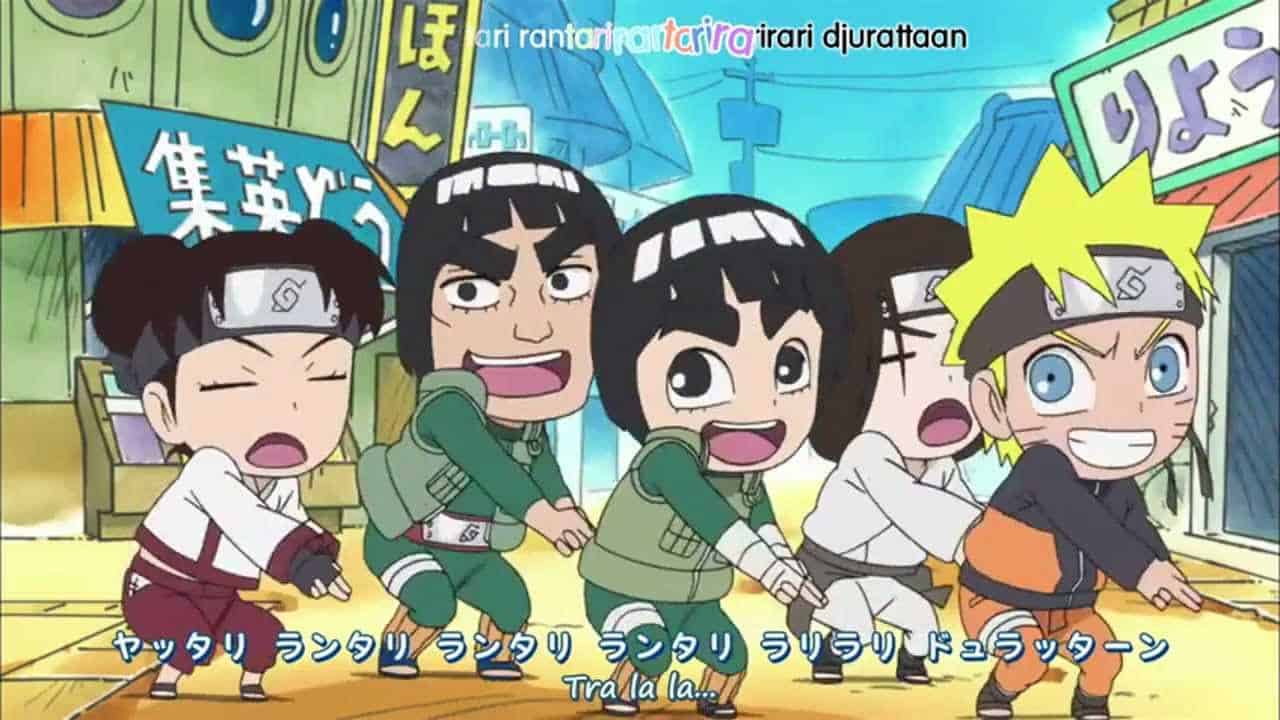
9. Naruto Appears As A Tree
Naruto appears for a brief cameo in “Rock Lee & His Ninja Pals” episode 34 while posing as a tree. During a mission, Rock Lee and his squad are seen in the scenario coming upon a grove of trees.
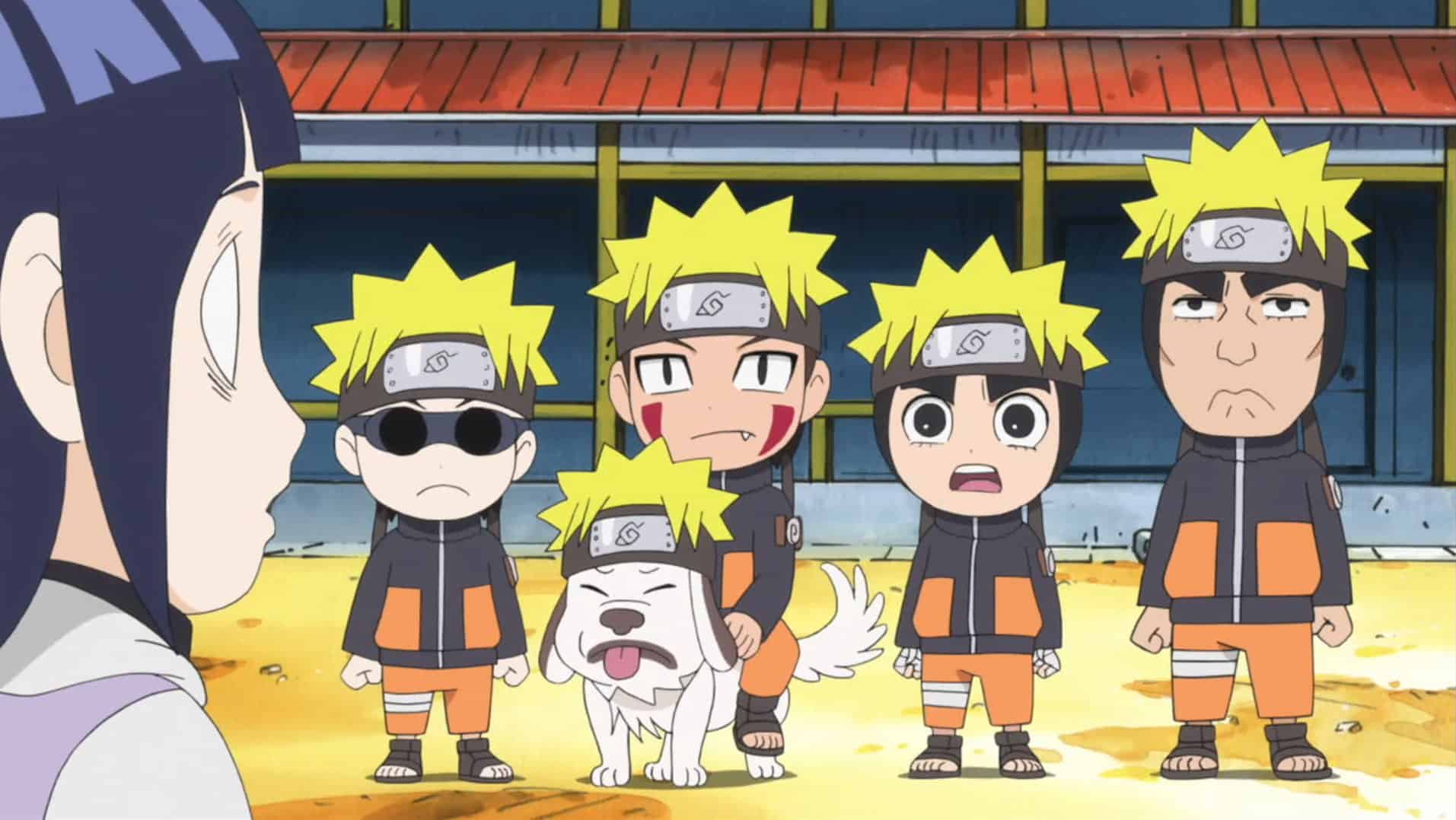
Before the crew can find Naruto, who is hidden in one of the trees, he makes a quick appearance. This appearance is a homage to Naruto’s mastery of the Shadow Clone Technique, his hallmark jutsu, which allows him to blend in with his surroundings.
Also Read: Most Popular Hot Anime Girls That You Shouldn’t Miss
10. Rock Lee And His Team Watch “Ninja Watch 2” To Reference “Ninja Warrior.”
The squad of “Rock Lee & His Ninja Pals” is shown viewing the television program “Ninja Watch 2” in episode 39. Similar to the well-known Japanese television program “Ninja Warrior,” the contest show features competitors navigating a difficult obstacle course. The allusion is only one of the numerous pop culture allusions and parodies that can be discovered throughout the series.

11. Moles From “Dragon Ball Z” Appear In “Whack-a-mole.”
The characters in “Rock Lee & His Ninja Pals” episode 44 play a game of “Whack-a-Mole” in which they have to strike moles that emerge from holes. One of the moles that appear in the game is a character from “Dragon Ball Z,” another well-known manga and anime series.
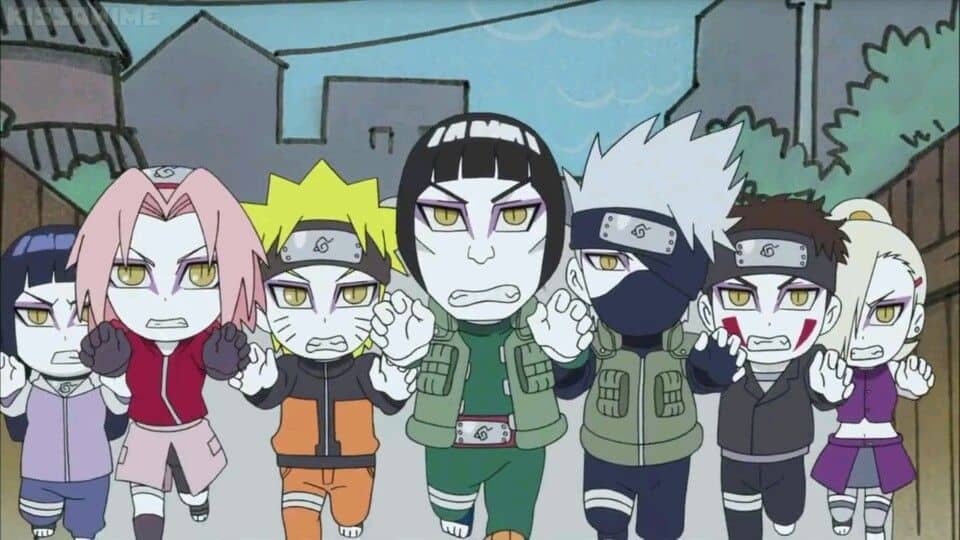
The mole has Goku’s distinctive spiky hair and is wearing the same orange and blue clothing that Goku, the main character of “Dragon Ball Z,” is known for.
12. Reference To The Manga And Anime Series “Gintama.”
In reference to the well-known manga and anime series “Gintama,” the characters of “Rock Lee & His Ninja Pals” are shown playing a game called “Gintama-Go” in episode 47. The objective of the game is to topple the opponent’s top by spinning your own top.

Also Read: Most Popular Must-Watch Romance Anime in 2022
13. The Movie “Samurai & Ninja” References The 1960s Film “Shinobi No Mono.”
The historical drama series “Shinobi no Mono” is based on the exploits of Ishikawa Goemon, a renowned ninja. The anime and manga have both made references to the film series, which was hugely successful in Japan. The characters of “Rock Lee & His Ninja Pals” watch a parody of the movie “Samurai & Ninja” in episode 50.
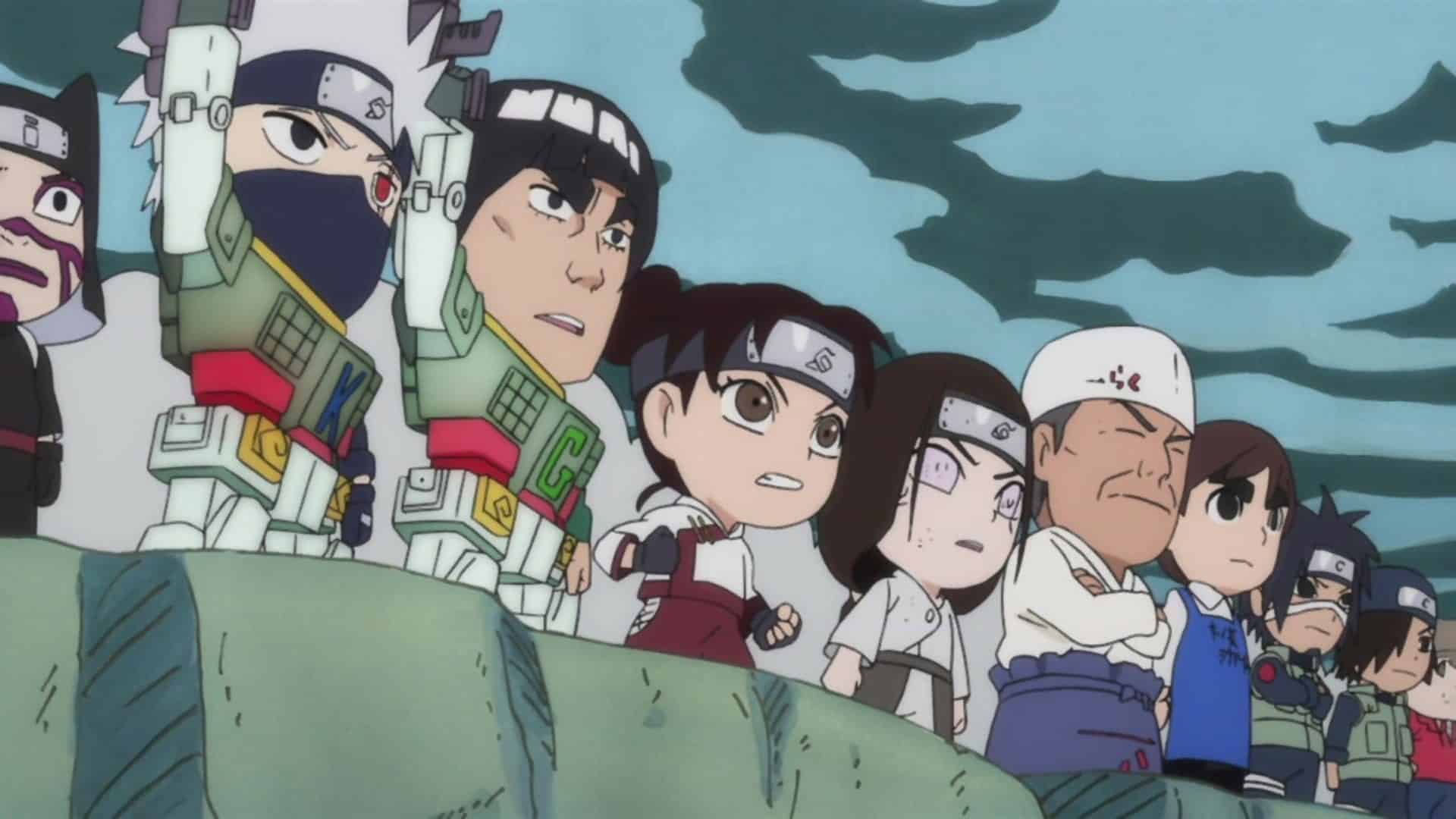
14. Tenten’s Brother Menma Wears A Stylized Version Of The “Jojo’s Bizarre Adventure” Logo
The words “Ninja” and “Ninja’s Bizarre Adventure” are written on Menma’s shirt in place of the famous “JoJo” logo. This pays homage to the well-known manga and anime series “JoJo’s Bizarre Adventure,” which has an original visual aesthetic and quirky characters with special powers.
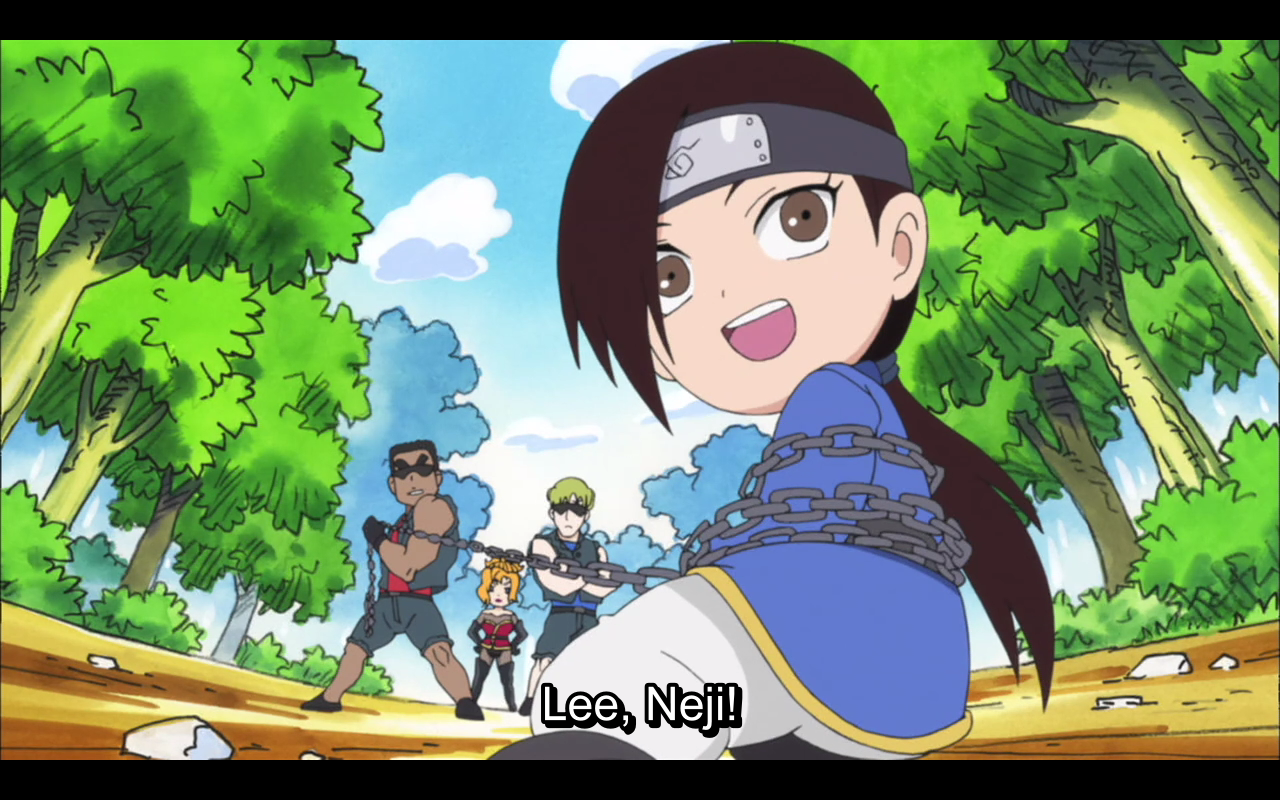
15. Characters Use Special Techniques From Other Manga And Anime Series In Dodgeball Game
Several characters utilize special moves that make references to other manga and anime series during the dodgeball match in episode 28. The name “Ora Ora Entry” for Rock Lee’s movie “Dynamic Entry” is a parody of Jotaro Kujo’s battle cry from “JoJo’s Bizarre Adventure” and refers to the character.
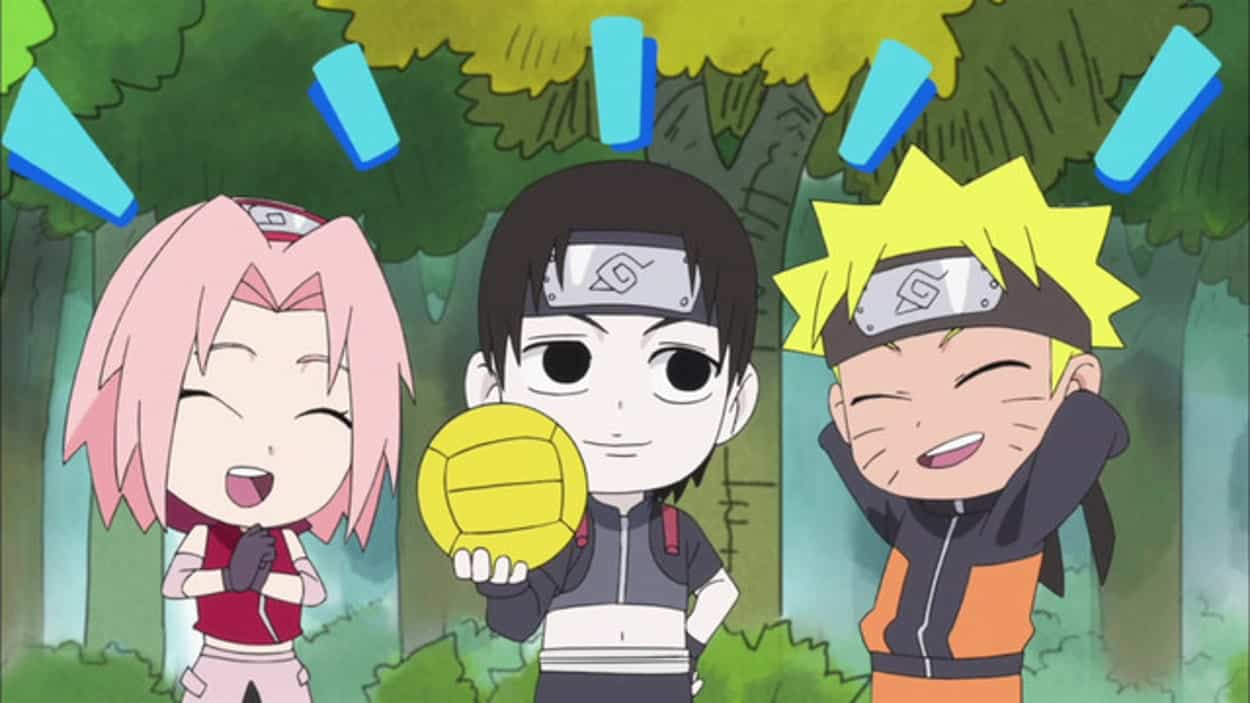
Similar to this, a member of the other team performs a technique known as “Dio’s Stone Throw,” which alludes to “JoJo’s Bizarre Adventure’s” major antagonist. The renowned energy blast from “Dragon Ball Z” is referenced in a movie called “Kamehameha Ball,” used by another character.
Also Read: Top 10 Anime With Best English Dub That You Must Watch
16. Characters Imitate Famous Actors
The characters take part in a talent contest in episode 31. Tenten impersonates the “Kill Bill” role played by Uma Thurman, Rock Lee impersonates Jackie Chan, and Neji impersonates Bruce Lee. The talent show alludes to a similar event that occurs in the original “Naruto” manga and anime series.
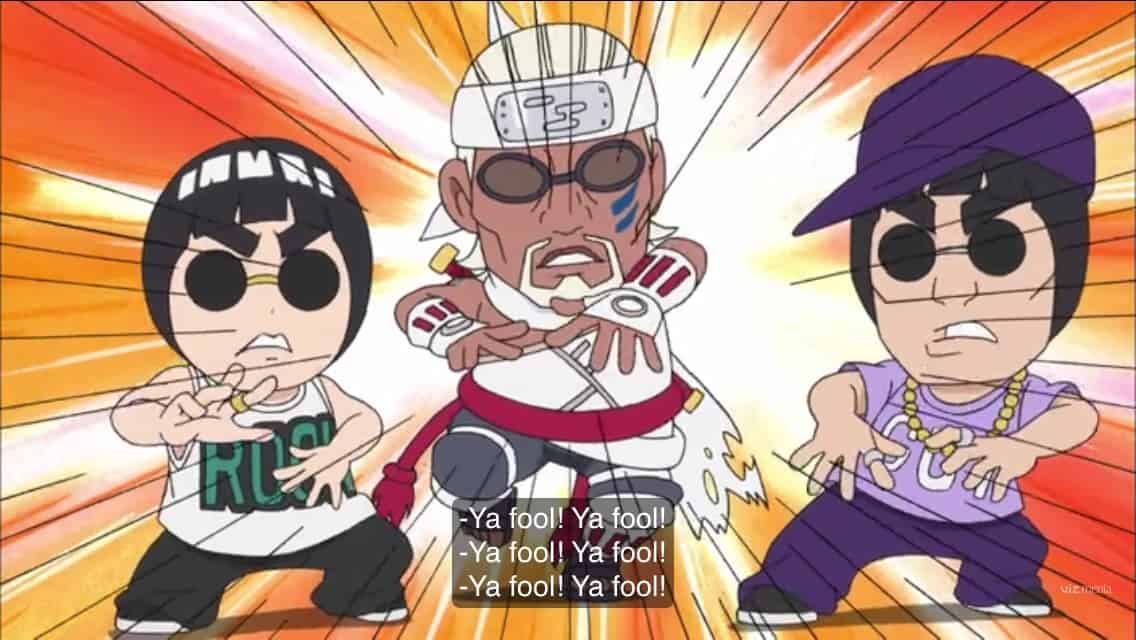
17. Characters Play “Janken” With Reference To the “One Piece” Series
Rock Lee imitates the “One Piece” character Luffy by stretching his arm out like a rubber band to select “paper” in the game of Janken in episode 38.

18. Reference To The Third Movie In The “Lord Of The Rings” Trilogy
The Return of the King, the third film of Peter Jackson’s “Lord of the Rings” film trilogy, is referenced in episode 41, as the characters are seen watching it.

Also Read: Best Revenge Anime To Watch In 2023
19. Reference To The Third Film In The “Dark Knight” Trilogy
The characters are shown in episode 49, viewing a movie titled “The Dark Knight Rises,” which is a reference to Christopher Nolan’s third film of the “Dark Knight” series. The scene shows Naruto and his friends reacting to the film’s climax, with Naruto adding his own amusing commentary.
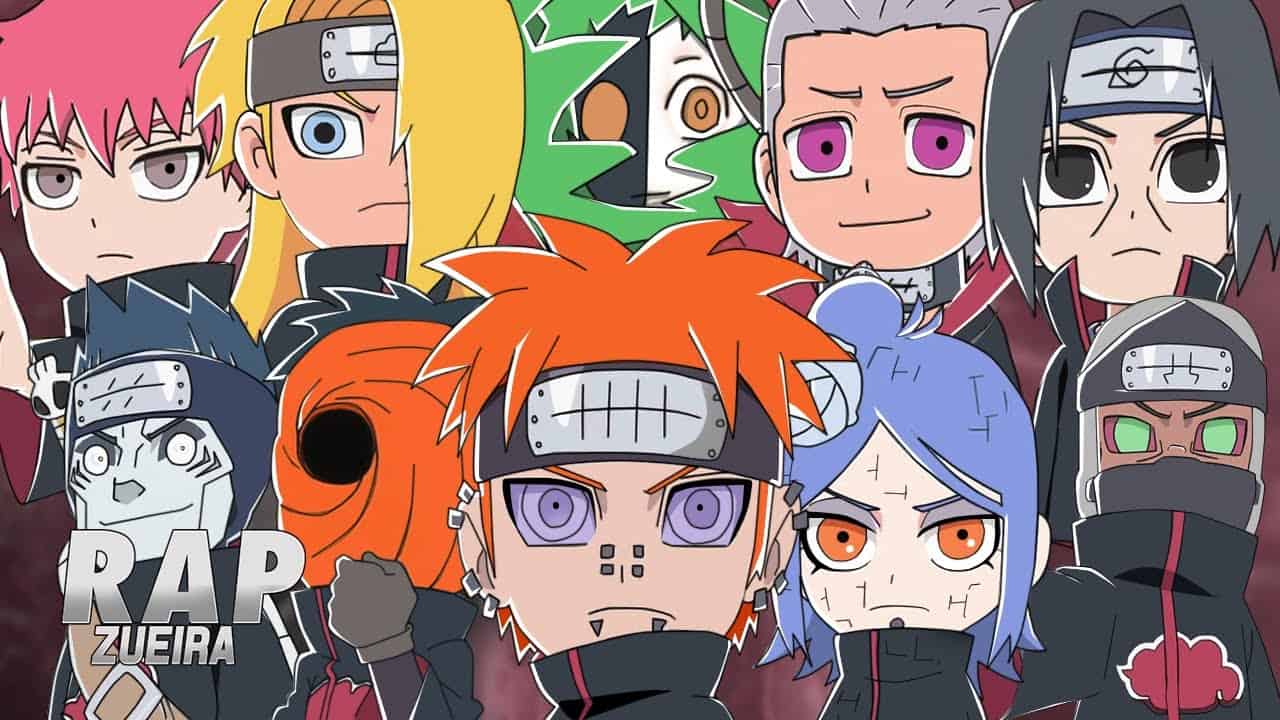
20. Lee’s Dad Is A Recurring Character In The Show, Often Mentioned But Never Seen
The anime frequently makes fun of Lee’s father, who is depicted as an extremely demanding parent who is concerned with pushing his son to become a great ninja and is always described as being very harsh and aggressive.
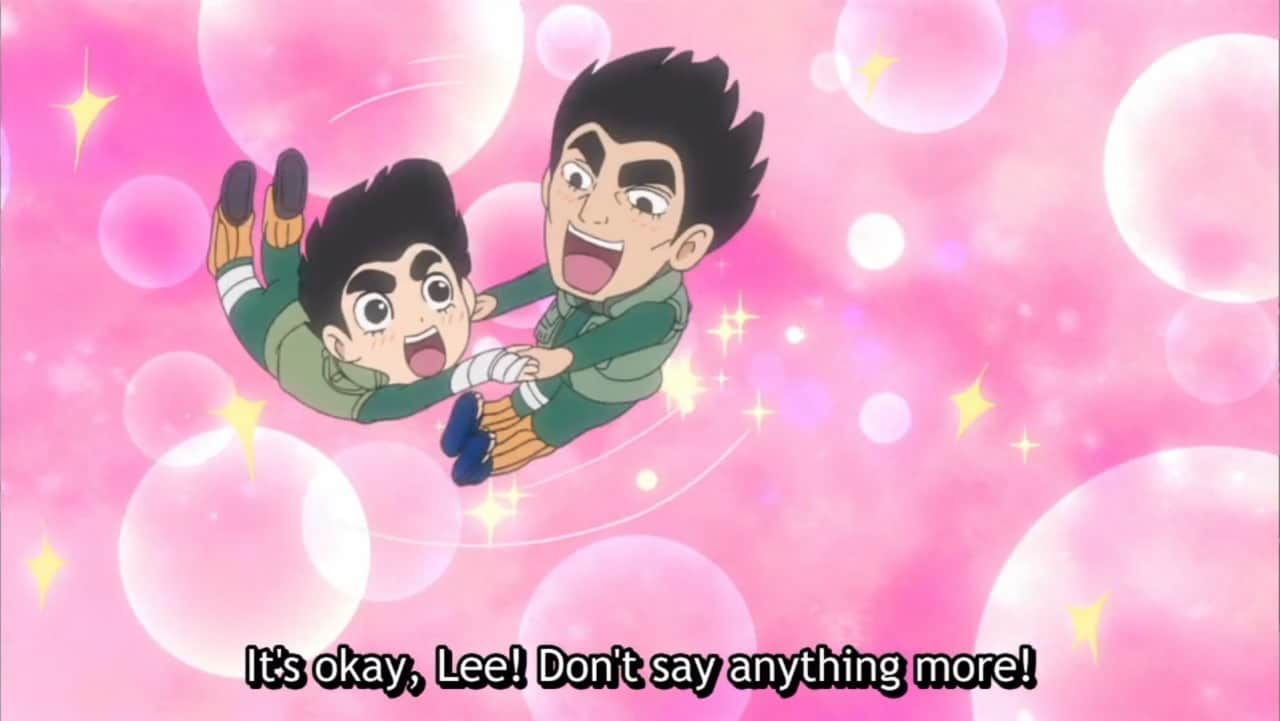
He never appears in the episode, which heightens the hilarity of his character. The other characters frequently make fun of Lee’s strict father, and Lee himself is depicted as feeling terrified by his father’s rigorous training regimens.
21. The Series Features A Character Named Matsuri
In the “Rock Lee & His Ninja Pals” anime, Matsuri makes her debut as a kunoichi (female ninja) from the Hidden Sand Village who is assigned to oversee Rock Lee and his crew as they go on a mission to protect a village.

She starts out with a serious and icy demeanor but later on warms up and even starts to have feelings for Rock Lee. As a pupil of Gaara, the Kazekage of the Hidden Sand Village, Matsuri also makes an appearance in the original “Naruto” manga and anime series.
Also Read: What Episode Does Naruto Tell Hinata He Loves Her?
22. The Series References Japanese Culture And Folklore
Like its predecessor, the “Naruto SD” series significantly incorporates Japanese culture and folklore into its setting and cast of characters. The “Tenten‘s Tengu” recurring character in the show is a representation of the tengu, a supernatural being that is frequently portrayed as a bird-like creature with human-like features.
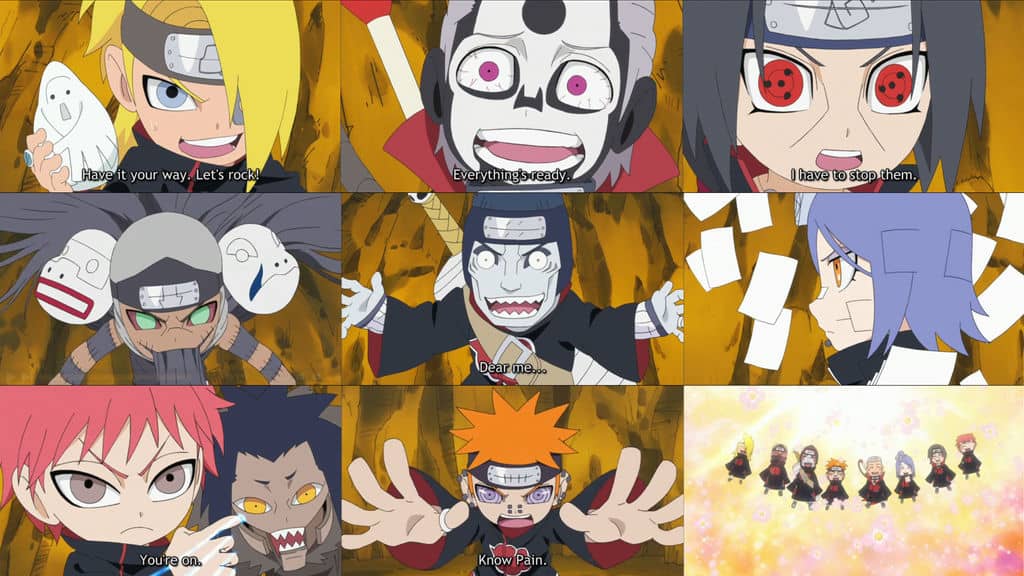
The show also makes numerous cultural references to Japan, such as by referencing ninja movies and game shows, as well as traditional Japanese attire and architecture.
23. The Series Features References To The Original “Naruto” Series
As a spin-off of the main “Naruto” series, “Rock Lee & His Ninja Pals” has numerous allusions to the original series. There are flashbacks to scenes from the main series, including the Chunin Exams and the battle with Pain, as well as cameos by characters like Naruto, Sasuke, and Sakura.

A few of the plots in “Rock Lee & His Ninja Pals” also make clear allusions to incidents in the main series, such as Rock Lee’s rivalry with Neji and his desire to become a great ninja despite his lack of natural talent.
Also Read: 35 Most Popular Anime With An Overpowered Lead, Story with OP MC
24. The Series Explores The Backstory Of the Characters
In “Rock Lee & His Ninja Pals,” Might Guy, Tenten, and other characters from the original “Naruto” series are given more context. This gives viewers a greater grasp of their motivations, relationships, and personalities.
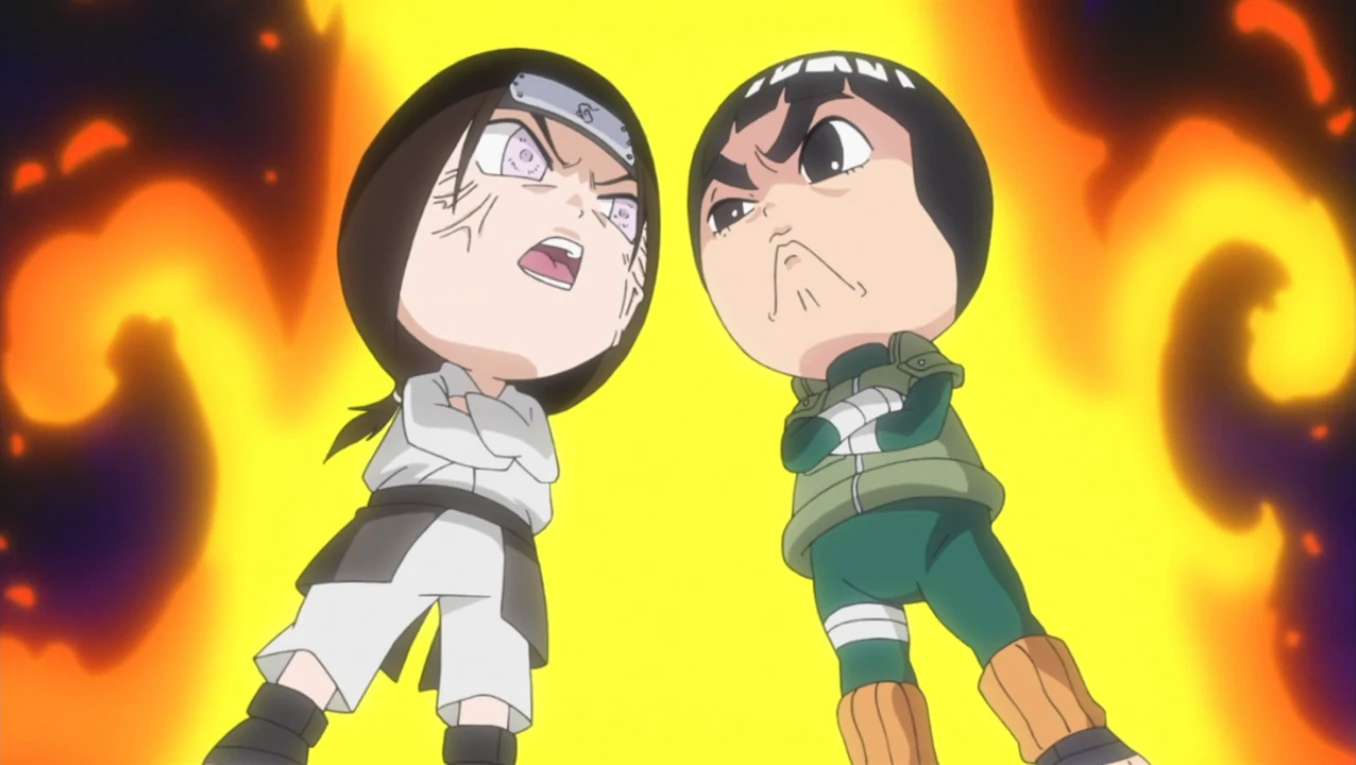
25. The Series Also Features Madara
Madara from “Rock Lee & His Ninja Pals” is not the same as Madara Uchiha from the main “Naruto” series. The Madara in the spin-off series is a wholly different character from the main series, has a different past, and isn’t portrayed as a major antagonist.
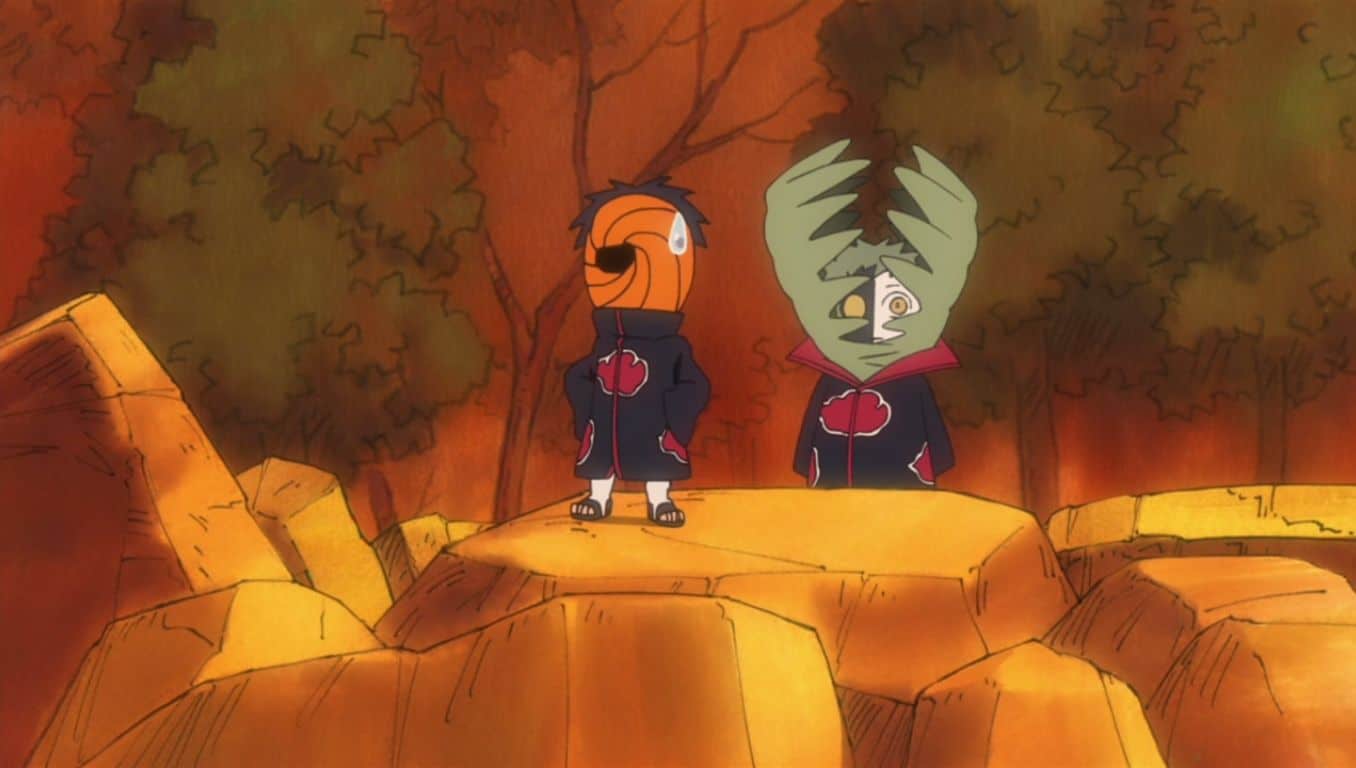
26. The Series Features Various Themes Of Redemption And Forgiveness
Through the characters in the show, especially Rock Lee’s squad, who grow to overcome their fears and past failings to become stronger ninjas, the theme of redemption and forgiveness is explored.
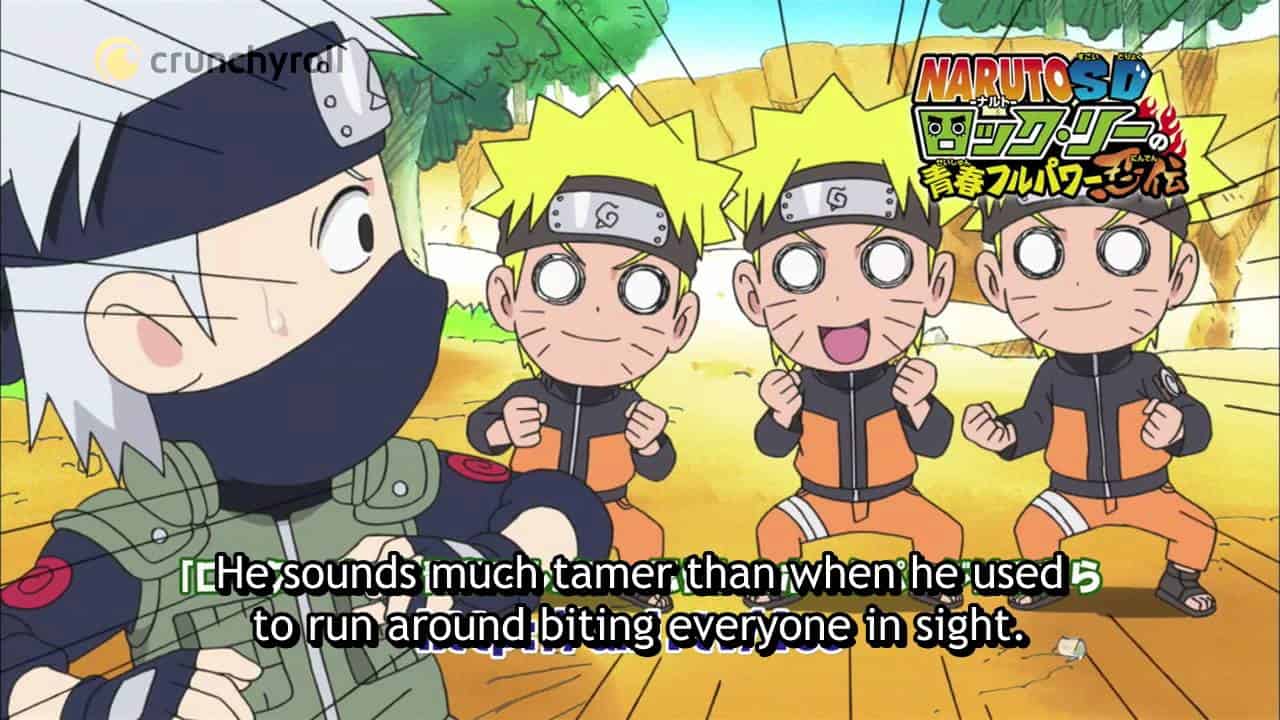
Some characters, like Might Guy and Tenten, who are given a chance to get past their mistakes and do better in the future, are examples of this concept.
Also Read: 10 Best Anime About Revenge That You Should Watch


